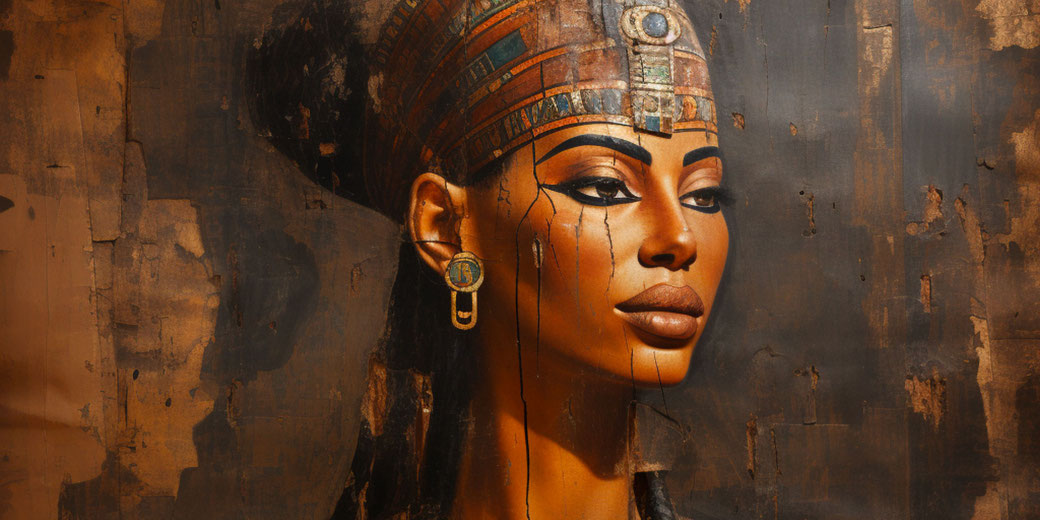The Valley of the Queens: Where some of Egypt's greatest women were buried

Nestled near the banks of the Nile, close to the bustling city of Luxor, lies a site of profound historical and cultural significance—Egypt's Valley of the Queens.
Often overshadowed by its more famous counterpart, the Valley of the Kings, this secluded necropolis serves as the final resting place for the queens and high-ranking women of ancient Egypt, as well as some princes and other nobles.
The valley is a treasure trove of art, architecture, and history, offering a glimpse into the deeply held beliefs and customs of a civilization that has long captivated the world's imagination.
Among its labyrinth of tombs, the most celebrated is that of Queen Nefertari, the beloved wife of Pharaoh Ramesses II.
What is the 'Valley of the Queens'?
The Valley of the Queens, known in ancient times as Ta-Set-Neferu or "The Place of Beauty," has its roots in the New Kingdom period of ancient Egypt, roughly spanning from the 16th to the 11th century BCE.
This era was marked by a resurgence in monumental architecture, religious reforms, and military conquests, setting the stage for the construction of elaborate tombs for royalty and nobility.
While the Valley of the Kings, located nearby, was primarily dedicated to the burial of pharaohs, the Valley of the Queens became the chosen necropolis for the wives, daughters, and other female relatives of these rulers.
Some princes and nobles were also interred here, making it a diverse repository of tombs from various reigns.
The most illustrious period for the Valley of the Queens came during the reign of Ramesses II, one of ancient Egypt's most powerful and long-reigning pharaohs, who ruled from around 1292 to 1189 BCE.
Where is the Valley of the Queens located?
Situated on the west bank of the Nile River, near the modern city of Luxor in southern Egypt, the Valley of the Queens is a part of the larger Theban Necropolis, an area rich in historical and archaeological significance.
The valley is cradled by the rugged, limestone hills of the Theban Mountains, which provide both a natural barrier and a serene backdrop to this ancient burial ground.
Its proximity to the Nile made it accessible for construction and ritual activities, yet its somewhat secluded location also offered a measure of protection against tomb robbers, at least initially.
The valley lies not far from the Valley of the Kings, its more famous counterpart, and the two are often studied in conjunction to provide a fuller picture of New Kingdom burial practices.
The geographical setting of the Valley of the Queens was deeply symbolic. The west bank of the Nile was associated with the realm of the dead in ancient Egyptian belief, as the sun sets in the west, symbolizing the death of the day.
This made the western bank an ideal location for tombs and mortuary temples, aligning with the Egyptians' cosmological views.
The natural landscape itself, including the shape of the hills and cliffs, was often interpreted to have religious significance, sometimes seen as mirroring the primeval mound of creation in ancient Egyptian mythology.
Notable tombs and discoveries at the site
The Valley of the Queens is home to more than 90 tombs, each with its own unique features, historical significance, and state of preservation.
However, among these, certain tombs stand out for their artistic, architectural, and historical contributions to our understanding of ancient Egyptian culture.
The most famous of all is undoubtedly the tomb of Queen Nefertari, designated as QV66.
Discovered in 1904 by Italian Egyptologist Ernesto Schiaparelli, Nefertari's tomb is often hailed as the Sistine Chapel of ancient Egypt.
Its walls are adorned with vivid frescoes that depict the queen's journey through the afterlife, guided by various deities.
The quality of the artwork and the richness of the colors are unparalleled, making it a masterpiece of ancient Egyptian art.
Another significant tomb is that of Queen Titi, labeled as QV52. Though not as grand as Nefertari's, Titi's tomb is noteworthy for its well-preserved reliefs and inscriptions, offering valuable insights into the religious texts of the time.
The tomb of Prince Khaemweset, a son of Ramesses II, is also of interest. Khaemweset was a priest and is credited with restoration efforts in the valley during his lifetime.
His tomb, though smaller than those of the queens, is significant for its inscriptions that detail his titles and roles, shedding light on the religious and administrative duties of royal princes.
In addition to these, the Valley of the Queens contains several other tombs that, while less famous, are nonetheless important for various reasons.
Some are valued for the artifacts they contained, such as jewelry, amulets, and canopic jars, which were used to store the internal organs of the deceased.
Others are significant for their inscriptions, which include prayers, spells, and hymns intended to aid the deceased in the afterlife.
These texts are invaluable for scholars studying ancient Egyptian religion and funerary practices.
The tombs in the Valley of the Queens have also been the subject of various archaeological expeditions aimed at both discovery and preservation.
Modern technology, such as ground-penetrating radar and digital mapping, has been employed to explore the valley further, revealing previously unknown chambers and offering new avenues for research.
These ongoing efforts continue to enrich our understanding of this fascinating site, making each tomb a piece of a larger puzzle that, when assembled, provides a comprehensive view of life, death, and eternity in the eyes of the ancient Egyptians.
What do you need help with?
Download ready-to-use digital learning resources
Copyright © History Skills 2014-2025.
Contact via email
With the exception of links to external sites, some historical sources and extracts from specific publications, all content on this website is copyrighted by History Skills. This content may not be copied, republished or redistributed without written permission from the website creator. Please use the Contact page to obtain relevant permission.





